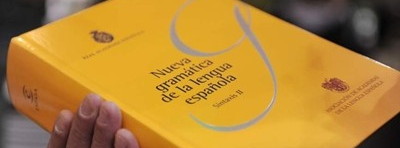 |
Seguir y continuar + gerundio |
The perífrasis verbal seguir+gerundio is one of the most frequently used constructions in Spanish. In most contexts it can be translated into English as 'to carry on', 'to continue', or 'still'.
"Con las perífrasis verbales «seguir+gerundio» y «continuar+gerundio» se presupone que el proceso o el estado de cosas denotado tenía lugar en un momento anterior, y se implica que la situación persiste o se mantiene en el momento del habla o en el punto temporal de referencia que se introduzca".1
Continuar and seguir are interchangeable in a number of contexts, with continuar being the more formal of the two.
-Siguió/Continuó hablando de sus problemas
-La policía sigue/continúa investigando el crimen
Bear in mind the following points when using these constructions:
1) Seguir+gerundio can be used with states or activities where the subject is not the agent. In modern Spanish, this generally sounds forced with 'continuar+gerundio'.1
-Sigue siendo necesario [Continúa siendo necesario -menos común]
-Sigue estando enfermo [Continúa estando enfermo -poco habitual]
-Sigue necesitando ayuda [Continúa necesitando ayuda??]
-El edificio sigue cayéndose a trozos [Continúa cayéndose a trozos??]
-Sigue trabajando en la fábrica [Continúa trabajando en la fábrica -poco habitual]
→-Siguió/Continuó trabajando hasta las doce [Agency]
2) Seguir+gerundio can also be used in impersonal constructions. Once again, this generally sounds unnatural with continuar.2
-Sigue habiendo mucho paro [Continúa habiendo mucho paro??]
-Sigue lloviendo
-Sigue haciendo calor
3) With short-lived, telic events, which are delimited, seguir+gerundio tends to force the repetitive interpretation. Sometimes the repetitive/iterative interpretation is inferred from the context.3
-Siguió llegando tarde [Iterativo]
-Sigue cerrando la puerta de un portazo [Continúa cerrando la puerta de un portazo]
-Sigo acostándome tarde [Iterativo]
-Sigo escribiendo la carta [Continuo]
→Sigo escribiendo cartas [Iterativo]
4) Both can be used in passive, but continuar is considerably less common.
-Sigue siendo abusado [Continúa siendo abusado]
-Siguió siendo denunciado [Continuó siendo denunciado]
5) Note that, like acabar/terminar+gerundio, seguir+gerundio may have two interpretations.
Sometimes seguir refers to a change of action/activity rather than the continuation of a previous one; in this case the gerundio tells us how the person continued.4
-Siguió/Continuó criticando a su jefa durante otros 2o minutos [La siguió criticando; interpretación perifrástica; ≈he continued to criticize her]
→Empezó el discurso hablando de su familia, y siguió/continuó criticando a su jefa [la siguió criticando??; aquí hay un complemento directo tácito (el discurso); ¿cómo siguió el discurso?; interpretación no perifrástica; ≈he continued by criticizing her]
6) Seguir and continuar can normally be paraphrased with aún/ya no +verbo.
-Sigue pensando que es buena idea → Aún/todavía piensa que es buena idea
-No sigo estudiando eso → Ya no estudio eso
7) Both seguir and continuar can also be followed by other elements, such as a participle or prepositional phrase.
-Sigue sin dinero
-Sigue preocupado → Todavía está preocupado
-Sigue/Continúa así
8) Seguir sin is followed by the infinitive to express that something 'still hasn't happened'.5
-Sigo sin saber nada de él → Aún/todavía no sé nada de él
-Juan sigue sin aparecer → Juan no ha aparecido aún
-No vamos a dejar de preocuparnos mientras siga sin dar señales de vida
→No vamos a dejar de preocuparnos hasta que (no) dé señales de vida [Véase hasta que no]
- See previous discussions for other perífrasis verbales: ir gerundio, venir gerundio, andar gerundio.
˜
-Seguir y continuar + gerundio-

